Silicon carbide crucible
As a top crucible supplier, Superbmelt provides various crucibles for metal smelting
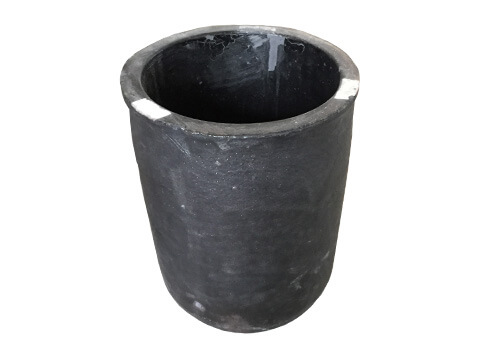
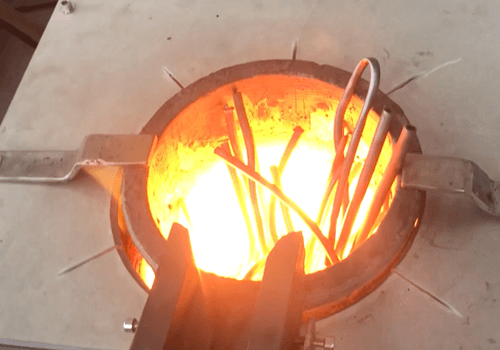
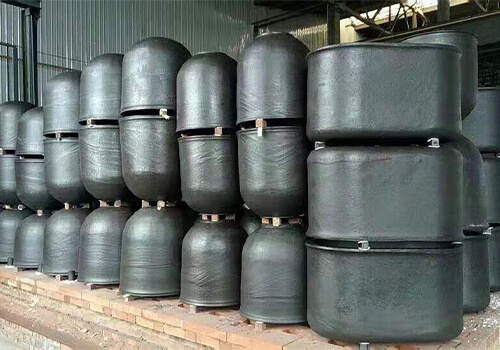
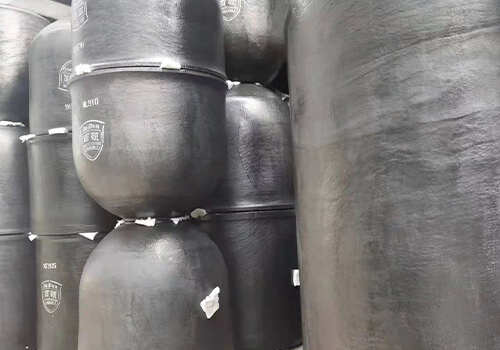
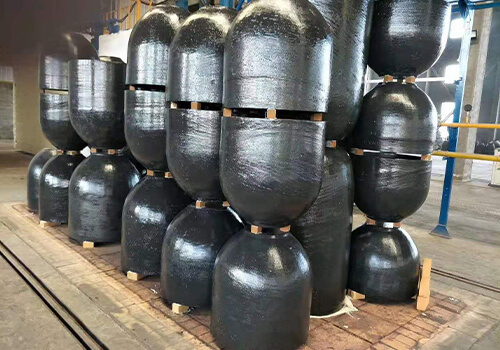
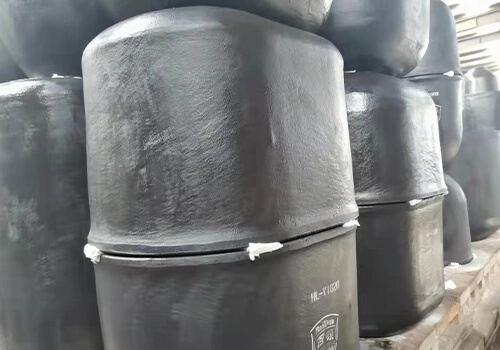
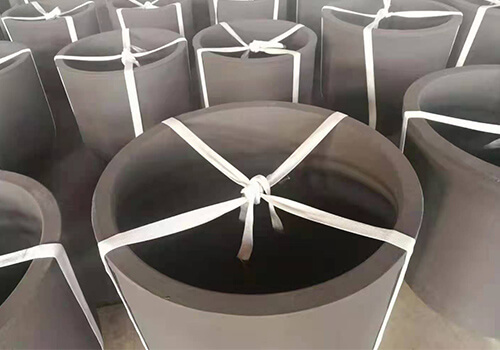
Silicon carbide crucibles are generally made of carbon bonded silicon and graphite materials. Silicon carbide crucibles are suitable for smelting and melting precious metals, base metals and other metals in an induction furnace. They are used at a temperature reaching 1600 degree celsius.
The silicon carbide crucible offers a uniform and consistent temperature when melting and has a high strength and resistance to cracking. The uniform temperature gives a high quality molten metal needed for casting long lasting and good quality metal products.
Silicon carbide crucibles have good thermal conductivity, high strength, low thermal expansion, oxidation resistance, resistance to thermal shocks, resistance to wetting, high hardness and wear resistance.
Due to the silicon carbide crucible properties, it is applicable in various industries such as, chemical, electron, semiconductor, metallurgy, etc.
| Model | A ± 5mm | B ± 5mm | C ± 10mm | H ± 10mm | 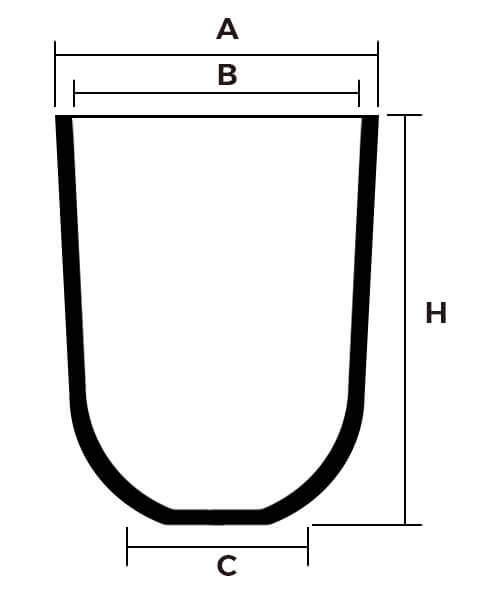 |
| SiC26 | 170 | 130 | 115 | 220 | |
| SiC28 | 170 | 130 | 115 | 260 | |
| SiC30 | 205 | 162 | 130 | 265 | |
| SiC40 | 240 | 200 | 170 | 335 | |
| SiC60 | 270 | 210 | 180 | 335 | |
| SiC80 | 290 | 230 | 225 | 340 | |
| SiC85 | 295 | 240 | 225 | 400 | |
| SiC90 | 305 | 248 | 150 | 345 | |
| SiC95 | 310 | 255 | 170 | 345 | |
| SiC100 | 310 | 240 | 220 | 350 | |
| SiC110 | 325 | 266 | 205 | 380 | |
| SiC153 | 375 | 310 | 200 | 400 | |
| SiC154 | 395 | 325 | 220 | 580 | |
| SiC155 | 390 | 330 | 220 | 650 | |
| SiC170 | 355 | 295 | 280 | 480 | |
| SiC200 | 400 | 349 | 215 | 510 | |
| SiC201B | 420 | 360 | 215 | 505 | |
| SiC202 | 425 | 350 | 230 | 530 | |
| SiC203 | 430 | 355 | 230 | 600 | |
| SiC204(thin) | 420 | 360 | 210 | 500 | |
| SiC205 | 430 | 360 | 230 | 650 | |
| SiC292 | 510 | 444 | 290 | 450 | |
| SiC293 | 500 | 444 | 290 | 510 | |
| SiC300 | 450 | 390 | 250 | 500 |
- The silicon carbide crucible has a good thermal conductivity and better melt time that saves energy cost and extends crucible life.
- The high conductivity, low thermal expansion and high strength makes the silicon carbide crucible resistant to shock that can later lead to cracks of the crucible.
- Silicon carbide crucibles are highly resistant to chemical attacks that may be caused by fluxes and additives.
- The silicon carbide crucibles are suitable for melting in induction furnaces as well as electrical furnaces.
- Silicon carbide crucibles have a high mechanical strength and refractoriness which makes it suitable for melting heavy alloys.
- Silicon carbide crucible provides a uniform and consistent melting throughout the crucible, this however contributes to the high melting quality of the crucible.
- The silicon carbide crucible is applicable in high and low frequency induction furnaces.
- The silicon graphite crucible has a long service life irrespective of the frequency of use. This is possible because the silicon graphite crucible has high resistance to thermal shock.
- The silicon carbide crucible is made up of silicon and graphite that makes use of synthetic resins as its bonding material. This therefore makes the silicon carbide crucible a better choice for melting copper, brass, nickel, chromium and their alloys.
- Silicon carbide crucible ensures that molten metal is not contaminated with impurities because of the low ash content present in the silicon carbide crucible.
- The silicon graphite crucible is corrosion and oxidation resistance that also makes the crucible life longer.
- The silicon graphite crucible price is very affordable and maintenance is quite easy.
Why You Could Choose Superbmelt

2 years warranty
The warranty for our machine is one year longer than the warranty provided by other factories.

ISO CE SGS approved
Professional certification bodies certify that the machines are of high quality.

Strong service team
We will give response within 24 hours against your problem by our professional engineer.
Why SuperbMelt Silicon Carbide Crucible
High Quality
Any Question About SuperbMelt Silicon Carbide Crucible
Superbmelt’s professional technical team and sales team are at your service
(7/24hours service)
Silicon Carbide Graphite Crucible Buying Guide
Application Fields of Silicon Carbide Graphite Crucible
1.1, Silicon carbide graphite crucible is used in various metal smelting
A silicon carbide graphite crucible is a container made up of silicon carbide and graphite materials, utilizing tar pitch or other synthetic resins as bonding materials. Silicon carbide graphite crucibles are used to hold metal for melting in a furnace. These materials can withstand high temperatures in a typical foundry process. The silicon carbide graphite crucible is able to withstand extreme temperatures (up to 1600 degree celsius) encountered in melting metals.
Due to their unique and qualitative manufacturing processes and quality raw materials, silicon carbide graphite crucibles are highly refractory products used for melting ferrous and non ferrous metals and alloys in the foundries due to their unique properties when compared to metal crucibles; such as good thermal conductivity, low thermal expansion, resistance to thermal shock, resistance to wetting molten metals, etc. These crucibles are mostly used for melting non ferrous precious metals such as brass, copper, nickel, chromium, zinc, aluminium, bronze, etc.
In view of the fast development in the industrial activity in the fields of foundry and engineering, the demand of the silicon carbide crucibles is ever increasing particularly from mines, railways, aeronautics, defense production units and other precious metals and alloy manufacturing units in the country which in turn are creating a wider scope for setting up new units.
The silicon carbide crucible is widely used in metallurgy, automotive, petroleum, semiconductors, iron, steel, electronics industry, machinery industry, chemical industry, powder metallurgy, aerospace, scientific experiments, etc.
These industries make use of the silicon carbide graphite crucibles due to their outstanding qualities as well as ease of use. Silicon carbide crucibles are simply used in induction furnaces, electric furnaces, as well as fuel fired furnaces. The SiC crucibles need to be tempered or preheated at 200 degree celsius for two hours before they are charged with metals. The SiC crucible is also widely adopted by these industries because it saves both cost of energy and production time.
1.2, Features and advantages of silicon carbide graphite crucible
Silicon carbide and graphite are the two main raw materials used in the production of silicon carbide graphite crucibles. These two materials have their own unique properties that make them the materials of choice for high quality crucible production.
Silicon carbide is an important non oxide ceramic which has diverse industrial applications. In fact, it has exclusive properties such as high hardness and strength, chemical and thermal stability, high melting point, oxidation resistance, high erosion resistance, etc. All these qualities make SiC a perfect raw material for high power and metal melting applications.
Graphite material on the other hand is a distinct material as it displays the properties of both metals and nonmetals. Graphite is flexible and has high electrical and thermal conductivity. It is also chemically inert and highly refractory. Graphite has a high melting point and a good conductor of heat.
The features and advantages of the silicon carbide graphite crucible include the following:
- High resistance to thermal shock: Crucibles when in use in a furnace are often subjected to the stresses created by rapid and/or uneven changes of temperatures, which in extreme cases can lead to premature failure. High resistance to thermal shock is imparted tosilicon carbide graphite crucibles as the heat is distributed quickly throughout the crucible, by usage of selective grades of flake graphite and silicon carbide. Silicon carbide graphite crucibles are particularly suitable for processes with frequently changing temperatures and high heating rates.
- High resistance to erosion: The flow of molten metal and charging the crucible with solid metal can lead to abrasion and erosion of the inside wall of the crucible. The high proportion of silicon carbide in the silicon carbide graphite crucible imparts better strength, greater hardness and high resistance to erosion.
- High resistance to chemical attack by fluxes and slags: Though graphite is chemically inert and resistance to corrosive chemicals, the bond is often susceptible to chemical attack by fluxes and slags. Silicon carbide graphite cruciblesare made of chemically inactive graphite, silicon carbide and carbon that resist attack by the alkaline fluxes used for light alloys, the oxidising/reducing fluxes used for copper alloys and the corrosive slag formed from them.
- Due to their carbon content: SiC graphite crucibles have excellent stability at high temperatures and are therefore particularly suitable for processes where the temperature is changing frequently and where high heat rates are utilized.
- Quality stability: the production technology and quality assurance system of high pressure forming method ofsilicon carbide graphite crucible fully guarantee the stability of quality.
- High resistance to atmospheric oxidation: Graphite oxidizes progressively in air as the temperature is raised. Mostsilicon carbide graphite crucibles have a glaze to prevent this. As no extra glaze is perfect by itself, invariably oxidation of graphite occurs, leading to loss of thermal conductivity and reduction in strength of the crucible. The silicon graphite and graphite materials provide extra resistance to oxidation of the silicon carbide graphite crucible.
- High mechanical strength and high refractoriness: Silicon carbide graphite crucibles are used for melting and holding non ferrous alloys and other heavy metal alloys.
- Silicon carbide graphite cruciblesare suitable for use in electric resistance furnaces: fuel fired furnaces and induction furnaces. SiC graphite crucibles perform well under difficult operating conditions. There is low metal loss when metals are melted with the SiC graphite crucible.
- The carbon content of graphite imparts high thermal conductivity: non wettability and coupled with its plate-like layed matrix structure, provides high thermal shock resistance to the silicon carbide crucible. This is critical to foundry application as temperatures can change by several hundred degrees in seconds.
- Silicon carbide is synthetic and manufactured from silica sand. This material provides excellent resistance to elevated temperature erosion and to chemical erosion. It also imparts thermal conductivity.
- Fast heat conduction: This feature of the SiC graphite crucibleensures that once the crucible hits the furnace, heat is quickly absorbed that allows very quick melting of the metal.
- Long service life: When compared with ordinary clay or clay graphite crucibles, SiC graphite crucibleslast 2 to 5 times longer than other types of crucibles based on the material composition of the crucibles.
- High density: The advanced isostatic pressing process is adopted which makes the silicon carbide and graphite materials dense and uniform without defects.
- Anti-corrosion: The advanced material makes the SiC graphite crucibleresistant to the physical and chemical effects of molten metal.
- Less slag sticking: Slag sticking of crucible wall is very minimal which reduces the crucible’s resistance to heat and reduces the possibility of cracking.
- Resistance to high temperature: SiC cruciblescan withstand heat of 400 to 1700 degree celsius, therefore metals with less than 1700 melting temperature can always be melted.
- Less contamination: The crucible materials are always in sync with molten metal, therefore there is no contamination of precious metal during melting.
- No metal wastage: The use of SiC graphite cruciblesensures that metal loss is reduced compared to when melted with other crucibles.
- Energy saving and environmentally safe: The fast heat feature of the crucible helps to save a lot of energy. Likewise, the environment is not polluted with emissions when melting.
1.3, How to get the best performance of SiC crucible
In order to get the best performance out of your SiC graphite crucible, there are certain practices that should be followed judiciously, therefore, the SiC crucible will have a long service life.
- Select different SiC crucibles for different smelting needs. Molten metals have different chemical components that may be a contaminant to other types of metals. Also ensure the crucible design matches your smelting needs.
- When heating the SiC graphite crucible, pay attention to the following:
- New crucibles should be preheated before charging with metal. The reason for preheating a new crucible is to get rid of moisture that is present in the crucible.
- When heating the crucible, ensure the outer surface of the crucible is evenly distributed with heat.
- Ensure the crucible is covered with a lid in order to reduce heat loss and oxidation of the crucible. Leave enough expansion space to prevent tight pressing on the upper edge of the crucible.
- When using a fuel fired crucible furnace, use a tightly oxidized flame and avoid heating the bottom of the crucible with direct flame.
- When adding additives and fluxes, the metal solution should be stirred immediately and the slag on the molten metal surface should be removed immediately. Flake or block additives should be added by immersing them with a bell.
- When pouring out molten metal, avoid hitting or knocking the crucibles with crucible tongs and ladle.
- Cleaning of crucible should be carried out when the crucible is still hot, use the special tools that match the crucible to carry out the cleaning.
- When crucible is temporarily stopped, the following needs to be noted:
- If a fuel fired furnace is being used, all fans should be turned off to prevent cold air from attacking the crucible which can lead to oxidation or cracking of the crucible.
- Allow the crucible to cool on its own at room temperature, as speeding up the rate of cooling can lead to crack and oxidation of the crucible.
- Silicon cruciblesthat are not frequently in use should be stored in a dry and clean environment.
- Constantly check and ensure that the crucible is working properly. Also ensure that the slag on the lining of the SiC graphite crucibleis cleaned on time.
How to Choose the Best Crucible for Melting
2.1, The capacity and dimension of the furnace
There are different furnaces, so also there are different crucibles that match every furnace distinctively. When you know the type of your furnace, this will guide you in choosing the best crucible that matches your furnace. Likewise, the dimension of the space of the furnace will dictate the choice of crucible.
These crucibles can be charged while outside or when installed inside the furnace, but they are removed from the furnace when extracting molten metal. The shape of the silicon carbide graphite crucible allows them to be lifted with tongs designed to properly support the crucible.
When smelting large quantities of non ferrous metals and alloys, the silicon carbide graphite crucible is the ideal choice, as you can smelt up to 30kg of metal at once. The price of silicon carbide graphite crucible is more affordable compared with other types of crucibles. Apart from the large SiC graphite crucible sizes, there are also sizes below the 30kg metal holding capacity.
However, when smelting pure gold of 1 to 30 kg sizes, a silicon carbide graphite crucible or a graphite crucible is the best choice, this ensures that your gold remains pure even after melting.
2.2, The type of furnace
The different types of furnaces are; fuel fired furnace, electric resistance furnace and induction furnace. All these types of furnaces are designed to use removable silicon carbide graphite crucibles.
Propane torch or fuel fired furnaces: The fuel fired furnaces are powered by coke, gas, oil or propane. This type of melting furnace is not entirely safe for the environment because of the emissions that would occur when it is fired.
When using a fuel fired furnace, it is best to use a crucible that is able to withstand the effects of the burner flame at the base of the crucible and the crucible must be tapered to allow the flame to circulate around the crucible from bottom to top, this allows the crucible to heat up evenly.
The crucible material must also be able to resist oxidation damage from frequent exposure to flame and accommodate the rate of thermal change the crucible will experience. Good thermal conductivity are important crucible properties in transferring the heat from the interior of the furnace through the crucible to the metal charge.
Crucibles with high graphite content such as the silicon carbide graphite crucible offer high thermal conductivity in gas fired furnaces.
Electric resistance furnace: The electric resistance furnace works in such a way that heat is generated by conductors that offer resistance to the passage of a current through them. Resistance furnaces are widely used in heat treatment for heating prior to shaping and to dry or melt metals.
Electric resistance furnaces provide even and all round heating to a crucible; and they are ideally suited to precise temperature control in metal melting. An energy efficient crucible with high graphite content is best for the electric resistance furnace because it has a high thermal conductivity for faster melting. The silicon carbide graphite crucible fits into this description and it is best used for the electric resistance furnace.
Induction furnace: Crucibles for induction furnaces require a more careful consideration when compared to other types of furnace. The reason is because there are induction furnaces whose crucibles are designed to be heated in the furnace’s inductive field and are used to melt the charge. In other induction furnaces, crucibles that allow the inductive field to pass through them and heat the metal charge directly are used.
Therefore, it is important to match the electrical characteristics of the crucible to the operating frequency of the furnace and the melting application; this however prevents crucible overheating.
The silicon carbide graphite crucible is applicable for melting in an induction melting furnace, any other crucible without a great percentage of graphite material cannot be induced to generate heat in the induction furnace.
2.3, The type of metals you want to smelt
Knowing what type of metals or alloys you melt or hold will influence the choice of crucible. The silicon carbide graphite crucible is mostly used to melt metals such as brass, copper, nickel, chromium and their alloys, etc. The first thing to always have in mind when selecting a crucible is that the crucible must have a higher melting temperature than the metals you wish to melt. Silicon carbide graphite crucible can be used at 1600 degree celsius. Silicon carbide crucibles can also be used to melt and hold aluminium and aluminium alloys, aluminium-bronze, copper and copper based alloys, nickel-bronze alloys, precious metals, zinc and zinc oxide. The silicon carbide graphite crucible performs higher in melting these metals because it has a higher shock resistance and higher density that prevents erosion.
To help guide further about choosing the right crucible for your application, consider answering the questions below:
What is the capacity of my melting?
What type of metals are my melting?
What type of furnace am I using?
What are the melting temperatures of the metals I want to melt?
Am I ready to keep changing crucibles every now and then or I want a long lasting crucible?
How much do I have to spend on a crucible?
Even though you are not sure of the crucible to choose despite having the knowledge of furnace capacity and dimension, you do not have to worry, our service team is always available to guide you in making a choice of crucible that best matches your furnace.
2.4, How to ensure your silicon carbide graphite crucible lasts longer
We are not only interested in guiding you through how to purchase the most suitable crucible that meets your needs, we are also interested in how you are able to maintain your crucible products. After purchasing your silicon carbide graphite crucible, it is also required that you take proper care of them to ensure that they last a very long time even after repeated use. The following practices will ensure you have a long lasting silicon carbide graphite crucibles:
- Select only the crucible that matches your application, this is the first and easiest step to ensuring a long lasting crucible use experience. You must consider the things mentioned above; such as type of furnace, capacity and type of metal, temperature changes, fluxs and additives used, etc. This contributes to a long lasting crucible.
- Maintain a careful log of crucible use and inspect the crucible often. Keeping an accurate log of crucible use is essential to the effective use and safe operations of crucibles. This practice allows you to create a history that will reveal what silicon carbide graphite cruciblelife you should anticipate in normal operations. With this information, you can set up a program of routine crucible replacement that will minimize downtime.
- Control dross build up by cleaning regularly. Dross or slag build up is bad in every way as it can affect future metals that will be melted in the silicon carbide graphite crucible. Dross has a low thermal conductivity that requires higher furnace temperatures. Dross absorbs fluxes and accelerates chemical attack on the crucible. The high expansion rate causes internal pressure on the crucible and can easily be damaged. The best thing to do is to frequently and thoroughly remove dross and slag, using a scraping tool that matches the curve of the crucible interior surface to prevent indentation of theSiC graphite crucible.
- In a fuel-fired furnace, operating the burner with excess air and direct flame impingement on the crucible surface will produce damaging oxidation of the SiC graphite crucible.In all furnaces, placing ceramic fiber between the crucible and its base or wedging ceramic fiber against the top edge of the crucible also will cause oxidation and cracking in those areas. Also, allowing a metal bath to be held at a minimal temperature for a lengthy period of time will accelerate crucible oxidation.
- Guide against chemical attack by minimizing the use of flux, flux should only be added after metal is fully molten. All crucibles, even those designed to resist chemical attack, can be damaged by flux additives. The most effective way to minimize this damage is to add flux only after the bath is fully molten and able to dilute the material. Adding flux with the solid charge allows the concentrated flux to attack the crucible surface during the melting process. It is important also to use the minimum amount of flux that is required.
- Avoid physical damage by charging crucibles correctly. Dropping a heavy casting or ingot into a SiC cruciblemay chip or crack the crucible, therefore, cutting their lifespan short. Follow proper charging practice of first loading small charge materials and then carefully lowering heavier materials on top of cushioning base. It is important also not to pack charge materials tightly into the furnace. When wedged material is heated, it expands and can crack the crucible.
- Every crucible has a maximum temperature limit. If you exceed that limit the crucible will be damaged and may fail. Keep close control of crucible temperatures. Allowing molten metal to solidify in the crucible also may damage the crucible when that metal is reheated for pouring.
- Preheating SiC graphite crucible prevents thermal shock. While some types of crucibles are designed to resist damage from rapid heating, all crucibles require careful preheating if allowed to cool between melts. Thermal shock causes cracking in crucibles heated too quickly.
- While installing a crucible is quick and easy, care must be taken to follow the instructions regarding base size, clearances between the crucible and the furnace and the initial preheating of the crucible. Too small a base may fail to provide sufficient support, and the wrong base height in a fuel-fired furnace may cause the burner flame to create an overheated and oxidized area on the crucible. Insufficient clearances between the crucible and the furnace sides and top may cause cracking when the heated crucible expands. Also, insufficient initial heating may result in crucible failure on first use.
- SiC graphite crucibles should be cleaned and stored properly after each use. Avoid stacking the crucibles into one another, this practice will damage the crucible.
2.5, Analysis common problems found in crucibles
| PROBLEM | DESCRIPTION | CAUSES |
| A. LONGITUDINAL CRACK | 1. When the crucible is in use for a very long time, longitudinal and thin cracks appear on the crucible wall. | 1. When the crucible has completed its service life, the crucible wall becomes thinner and unable to bear excessive heat. |
| 2. A brand new crucible or first time use of crucible having cracks that run from the bottom of the crucible to the lower edge. | 2. Placing the cool crucible in a high temperature heat or heating of the bottom of the crucible too fast. This damage is usually accompanied by a glaze peeling. | |
| 3. Longitudinal crack extending from the top edge of the crucible. | 3. Caused by heating the crucible too fast, especially when the button heat is faster than the heat reaching the top. Wedging at the top of the crucible is also likely to cause this problem. Improper crucible tongs or knocking on the upper edge will also cause hard damage and damage to the edge of the crucible neck. | |
| 4. Longitudinal crack on the surface of the crucible (in this case, the crack does not extend to the bottom of the crucible. | 4. This problem is caused by internal pressure. For instance, if the cooled wedge shape casting material is put into crucible horizontally, the wedge-shaped casting material will get damaged when heated. | |
| B. TRANSVERSE CRACK | 1. Appears near the bottom of the crucible and may cause the bottom of the crucible to fall off. | 1. It may be caused by indiscriminately throwing ingots into the crucible or hitting the bottom of the crucibles with hard objects such as iron rods. Thermal expansion can also lead to transverse crack. |
| 2. In the middle position. | 2. It could also be caused by placing the crucible on an unsuitable crucible base. If the crucible tongs and force is too high when removing the crucible, it will lead to a crack on the surface of the crucible. | |
| 3. When using a SA series crucible, there is a transverse crack at the bottom of the crucible mouth. | 3. Caused by not installing the crucible properly. If the refractory soil is tightly squeezed under the crucible mouth when installing the crucible; when the crucible cools and shrinks during use, the stress points will be solely on the crucible mouth, which then leads to cracks. | |
| C. STAR CRACK | 1. Appears at the bottom of the crucible. | 1. Caused by thermal expansion. |
| 2. Appears on the side of the crucible. | 2. Usually caused by the expansion of the wedge after heating. | |
| D. HOLE/BREAK | 1. Large holes appear on the wall that are not thinned out through very long use. | 1. Mostly caused by throwing in ingots into crucibles indiscriminately. |
| 2. Small holes | 2. Usually caused by cracks. | |
| E. CORROSION | 1. Corrosion of the metal liquid level inside the crucible. | 1. It is caused by additives and metal oxide floating on the metal surface. Avoid excessive use of additives. |
| 2. Corrosion appears in many places inside the crucible. | 2. Usually caused by corrosive substances such as additives not properly added to molten metal. Additives should be used according to stated regulations. | |
| 3. Corrosion appears on the bottom or bottom edge of the crucible. | 3. Caused by the use of low quality slag or excessive heating temperature. | |
| 4. The depression on the surface of the crucible. | 4. The additives infiltrate and erode the crucible outer wall through the inner wall of the crucible. | |
| F. COMPREHENSIVE PROBLEMS | 1. Mesh cracks on the outside | 1. Net-like cracks like crocodile skin, these are already too old and reached the end of its service life. |
| 2. Melting speed becomes slower than usual. | 2. This happens because the crucible is too old and has reached the end of its service life. | |
| 3. The glaze comes off. | 3. This is caused by heating a cool crucible directly in a hot furnace. It may also be caused by heating the crucible too fast. | |
| 4. The bottom protrudes upwards and then cracks. | 4. This could occur as a result of coke or slag sticking to the base of the crucible. Also, if the crucible is placed directly on hard ground, the crucible protrudes upwards and then cracks. | |
| 5. Crack at the bottom of the crucible. | 5. Caused by slag expansion at the bottom of the crucible. | |
| 6. The surface of the crucible appears greenish and begins to get soft. | 6. This is caused by long time melting above 1460 degree celsius. | |
| 7. The bottom or bottom edge of a new crucible becomes detached. | 7. This is caused by not preheating a new crucible. | |
| 8. Crucible deformation. | 8. Different parts of the crucible become expanded unevenly as a result of uneven heating. Heat up the crucible rapidly and evenly. | |
| 9. Oxidation. | 9. The crucible is oxidized in an oxidizing atmosphere between 600 and 900 degree celsius. | |
| 10. The crucible wall becomes thinner. | 10. When the crucible has used its stipulated service life, stop using it. |
Why Choose Superbmelt Crucibles
3.1, We are the factory
Superbmelt is indeed the production company that produces silicon carbide graphite crucibles and distributes to other wholesalers, retailers and many other end users. We determine the raw materials used for making the crucibles, we also design the silicon carbide graphite crucible sizes and shapes.
With the best raw materials, machinery and professionals, we ensure our crucible products meet the standard, this has enabled our clients over the years to trust us with only the best crucible products. Therefore, we cannot let them down.
Superbmelt has a wide sales network that connects refiners, laboratories, foundries and other industries that require metal melting and smelting for their production across 30 countries of the world.
3.1.1 Raw materials are highly controlled and regulated
The raw materials silicon carbide and graphite are graded to the required sizes and mixed with bounding materials like molten pitch or other suitable synthetic resins in suitable proportions. The kneaded homogeneous mixture is charged under a specified technical process. While this operation is going on, the total mass of mixture in the mold is kept in uniform hot condition to avoid manufacturing defects while pressing.
Typically, silicon carbide is produced using the Acheson process which involves heating silica sand and carbon to high temperatures in an Acheson graphite resistance furnace. It can be formed as a fine powder or a bonded mass that must be crushed and milled before it can be used as a powder feedstock. Once the Silicon Carbide is in a powder form, the grains of the compound are bonded together by sintering to form a very useful engineering ceramic, which has a wide range of uses including foundry use.
The second main raw material which is graphite is mined both on surface quarry and underground. The surface quarry involves mining graphite from an open pit or burrow. Underground mining is usually carried out when the graphite is present at a greater depth.
All these processes have to be passed through to get natural and high quality raw materials.
The raw materials, silicon carbide and graphite with additives such as ferro silicon- ferro manganese, etc, are graded to the required sizes and mixed with bonding materials like molten pitch or other suitable synthetic resins in suitable proportions. The mixing is done in a kneading mill, namely through a U-mixer when the bonding materials are in molten condition. The kneaded homogenous mixture is charged into an ejection type crucible die fitted on hydraulically operated roller presses. While pressing operation is ongoing, the total mass of mixture in the mold is kept in uniform hot condition to avoid manufacturing defects while pressing.
The shaped articles are left for a few days for setting and cooling. The ware is inspected for laminations, cracks, etc. and then loaded into shuttle kilns for firing at 1350 to 1400 degree celsius under reducing atmosphere to avoid oxidation of graphite and carbon.
To create a reducing atmosphere, the products are loaded into fire boxes called “saggers” tightly packed with reducing agents like coke/coal dust, sometimes even graphite powder. The fired ware is unloaded from the kiln after cooling. These are inspected and cooled with a suitable glaze, which has inherent properties of protecting the crucible from oxidation at operating temperature.
3.1.2 Precision CNC process
Graphite material is easy to machine to ensure smoothness of crucible products.
Superbmelt creates this high degree of precision using computer numerical control (CNC), replacing manually operated machines, vertical millers, and lathes with a centralized automated system. CNC machines convert computer-aided design (CAD) models into mass-produced parts with as little as .0001 variation between parts.
The CNC precision machines operate via advanced manufacturing technology, removing material from a solid block using a variety of cutting tools to achieve the intended design. There are three basic processes of CNC machining:
Milling: This process mounts the part onto a bed and removes material using rotational cutting tools, creating products in a wide variety of shapes.
Turning: This process mounts the part on a rotating chuck and removes material using stationary cutting tools, creating axially symmetric end products.
Electrical Discharge Machining (EDM): This process uses controlled electrical discharge to obtain desired shape.
The choice of graphite and silicon carbide materials enables the CNC machine to provide even and smooth SiC graphite crucibles. A crucible that is not even or smooth will definitely affect the quality of melting and possibly cause contamination of metal.
3.1.3 Testing of silicon graphite crucibles
Superbmelt silicon carbide crucibles go through the process of testing after the CNC machining process. The phase of testing helps us to ascertain the quality, efficiency and durability of our silicon graphite crucibles, therefore, our customers do not have to worry about defects that may have been skipped during the production process. At this stage, we identify only the standard silicon graphite crucibles that will make it to customer shelves.
We carry out three different types of test, which include: quality test, durability test and temperature test.
Quality test: Silicon carbide graphite crucibles are made up of silicon carbide and graphite. At this stage, these crucibles are tested for impurities and graphite grade, this ensures that no impurities or contamination from raw material occurs during the melting process. The quality of the crucible mainly depends on the number of heats/melts it can withstand in the foundry operations.
Durability test: This test focuses on how long our silicon carbide graphite crucible can last. At this point we determine the maximum melting point of the silicon graphite crucibles. This test is also carried out after the CNC machining process.
Temperature test: This test ensures that our silicon carbide graphite crucibles are able to withstand rapid heating and cooling temperatures of melting and casting.
3.2, Silicon graphite crucibles are shipped extremely fast
The world is moving really fast and every customer is looking at shopping with retail stores or companies that offer very fast shopping and delivery experience. At Superbmelt, we ensure you not only enjoy guided and fast shopping experience but you also get your items sent to you within three working days no matter where you are in the world, we deliver right at your doorstep.
We are able to ensure that our clients get their ordered products really fast due to the amount of crucibles we produce on a daily basis.
3.3, ISO CE SGS approved
At Superbmelt, we ensure that we have all national government and international approval of our products, hence, we produce only high quality silicon carbide graphite crucible products. International approval makes us extend our market outside our immediate environment.
Superbmelt is an ISO CE SGS approved company. These certifications of approval is an indication that Superbmelt products are of high standard.
3.4, Strong service team with 24 hours support service
We have professionals and customer relations officers that are available round the clock to guide, assist and attend to clients needs. Customer needs are very paramount to us, this is why we ensure that our customers needs are met when they come to us.
Our support service provides the following functions; attend to customer enquiries, attend to customer purchases, offer advice and guidance, track shipping of product till they are received, etc.
Conclusion
Silicon carbide crucibles have come to become an essential tool in metallurgy. Almost every industry that requires melting opt for the SiC crucible due to the ease of use and affordability to their production.
There are numerous SiC crucible manufacturers which may make you wonder where to choose from. At Superbmelt, we are not only concerned with you using your SiC crucibles just once or twice, but we ensure that you use your crucibles for as long as possible. We are able to achieve this, first from selecting high quality raw materials that make up the SiC graphite crucible; we also ensure that you purchase the crucible that is best suitable for your application.
The features you benefit from Superbmelt SiC graphite crucibles include: good thermal conductivity, low thermal expansion, resistance to thermal shock, resistance to wetting, resistance to fluxes, etc. Supermelt silicon carbide graphite crucible price is quite affordable for larger and small businesses.
FAQ Guide
What can be used as a crucible?
Crucibles are containers that are used to melt metals, any material that must be used as a crucible must have a higher temperature than the melting metal. Metal, graphite, silicon graphite and quartz based containers can be used as crucibles.
How is a graphite crucible different from a silicon carbide crucible?
The difference between the two crucibles are: The material composition of the crucibles, graphite crucibles are mostly made of graphite material while silicon carbide crucible is made with a combination of silicon carbide and graphite. Graphite crucibles are designed to melt metals such as gold, silver, copper and aluminum. Silicon carbide crucibles are used for smelting in larger induction furnaces, they are durable, do not oxidize or break down.
Is the silicon carbide crucible usable in an induction furnace?
Yes, a silicon carbide crucible is usable in an induction furnace. The silicon carbide crucible is able to melt at 1600 degree celsius in an induction furnace.
What is the use of silicon carbide crucible?
Silicon carbide crucibles are used for melting and smelting precious metal, base metals and their alloys.
What are the different types of crucibles?
The different types of crucibles are graphite crucibles, clay graphite crucibles, crucibles for melting gold, crucibles for melting silver, silicon carbide crucibles, quartz crucible, etc.
How expensive is a silicon carbide crucible?
Silicon carbide crucibles are very affordable, in fact, you can purchase as many as possible depending on your production capacity.
Does Superbmelt produce the silicon carbide crucibles?
Yes, Superbmelt manufactures high quality silicon carbide crucibles with original material, especially designed equipment and technicians that are experts in the science of crucible.
Can silicon carbide conduct electricity?
Silicon carbide has certain properties among which is a good conductor of electricity. Other properties of silicon carbide are; high hardness, chemical inertness, high thermal conductivity, low coefficient of thermal expansion, thermal shock resistance, strength at high temperature ranges, etc.
Can you melt brass in a silicon carbide crucible?
Yes, brass can be melted in a silicon carbide crucible since the melting temperature of brass is between 900 to 940 degree celsius.
How do you clean a silicon carbide graphite crucible?
Step 1: Gently scrape as much residue left from the materials used in your experiment from the crucible. Step 2: Fill your SiC crucible with fused potassium bicarbonate (solid form). You should have enough bicarbonate in the crucible to fill past the line of the remaining material from your experiments. If you need to fill the entire crucible, do so. Step 3: Place the crucible on a burner. Heat the crucible until the fused bicarbonate melts. Heat it until a layer of red potassium salt appears on the surface. Using a mixing rod, stir the melt a few times. The entire melting procedure should take about one minute. Step 4: Remove your crucible from the flame. Pour out the melt. Step 5: Rinse the crucible in hot water. Use a clean cloth to dry the surface.
How do you warm up a silicon carbide graphite crucible?
After installation in a furnace, the crucible should be heated slowly to a temperature reaching 200 degree celsius over a period of two hours, this is to eliminate any moisture that may be present in the crucible. Afterwards, silicon carbide crucible should be heated up at a temperature of 950 degree celsius on full power. Silicon carbide crucibles used in melting operation can be continuously heated up on full power until working temperature is reached. The crucible is ready to be charged with care. The above recommendation is for the use of new crucibles in existing furnaces. When installing a new silicon carbide crucible into a new furnace, the heating and drying instructions of the furnace manufacturer should be followed. If the furnace manufacturer prescribes a longer heating cycle, this procedure should be carried out without the crucible installed. It is essential that the crucible is installed in an absolutely dry furnace.
How much gold do you lose when you melt it down?
Gold with 99.9% purity, that is, 24 karat will not lose its purity during melting because it does not oxidize or vaporize. Although during pouring, some may be lost by spilling and some may remain in the crucible, they can be recaptured and remelted.
Should you temper silicon carbide graphite crucible?
Yes, you should temper the silicon carbide graphite crucible before you begin melting. The purpose of tempering your silicon carbide graphite crucible is to get rid of moisture in the crucible and prevent crucible shock.
What is a crucible for silver?
Crucible for silver is used to melt silver, gold aluminum, zin and other alloys. Crucible for silver is composed of graphite and it is able to withstand a temperature of about 2000 degree celsius.
What is a melting crucible made of?
The different types of crucibles, they are silicon carbide graphite, graphite crucibles, clay graphite crucibles; they are made of either graphite or a combination of other materials such as silicon carbide or clay and graphite.
What is the induction furnace principle with crucible?
An induction furnace consists of a nonconductive crucible that is holding the charge of metal to be melted, the crucible is surrounded by a coil made of copper wire. A powerful alternating current flows through the wire. The coil creates a rapidly reversing magnetic field that penetrates the metal. The magnetic field induces eddy currents inside the metal by electromagnetic induction.
What is silica crucible?
A silica crucible is a transparent container that is resistant to extremely high temperatures as well as being chemically inert to get non contaminable results.
What is the best material for a crucible?
The best material for crucible is graphite. Any other material that combines graphite is also good for making crucibles.
What is the purpose of heating the crucible before starting the experiment?
The purpose of heating the crucible before melting is to get rid of moisture that may be present in the crucible and for reducing thermal stress. This practice helps preserve the crucible life.
What needs to be checked before using a crucible?
SiC graphite crucible should be tempered before use. Heat the empty crucible at a low temperature for about 20 minutes. Then work the furnace crucible till red hot. Turn off the heat and leave the crucible to cool slowly. This process takes off any moisture in the crucible. SiC graphite crucibles should be properly checked for cracks prior to each application.
Which material is used for making silicon carbide graphite crucible?
A silicon carbide graphite crucible is primarily composed of silicon carbide and graphite materials.
Why do you preheat a crucible?
Preheating a crucible before use is important for reducing thermal stress on the crucible. This is extremely important when using a crucible for the first time, as it will keep the crucible from cracking. A preheated crucible also helps with adequate measurements.
Why is graphite used to make crucibles?
Graphite is often used as a material or part of the material for making crucibles dues to its properties. Graphite is soft, cleaves with very light pressure and has a very low specific gravity. Graphite is extremely resistant to heat and nearly inert contact with almost any other material.
Why must crucible be cooled before weighing?
Crucibles must be allowed to cool before weighing because the heat from the crucible warms the surrounding air which rises, then the air cools down and falls. The rise and fall of surrounding air is called a convection current that gives unsteady reading that is rising and falling. Other reasons for allowing crucibles to cool before weighing is that a crucible is hot enough to transfer heat to the weighing balance, potentially damaging it but at least affecting measurement due to expansion of the balance components.
Where are crucibles manufactured?
At Superbmelt, we are SiC crucible manufacturers, we manufacture silicon carbide graphite crucibles, graphite crucibles among other crucible types, from high quality raw materials.
What is a typical crucible life?
Crucible life depends on a number of variables including furnace type, metal melted, flux usage, operator practices, etc. This is why we encourage optimum care of crucibles so that they last a very long time.
How can I eliminate problems with flux attack?
Use only a limited amount of flux at the specified temperatures for a limited time. First, make sure your metal is completely melted. Next, add flux and mix thoroughly with metal. Make sure to clean all the ash and oxides from the crucible during the melt and after it has been emptied.

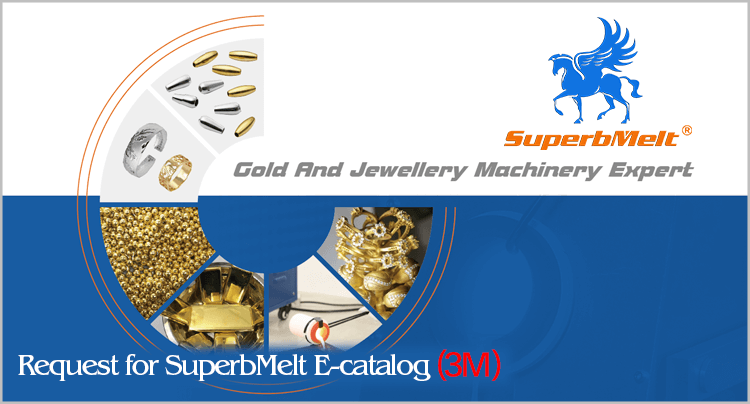
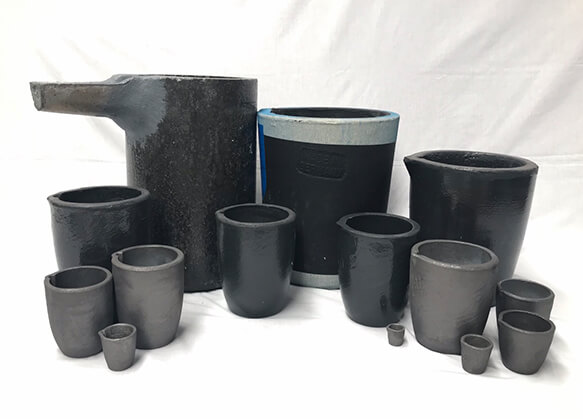
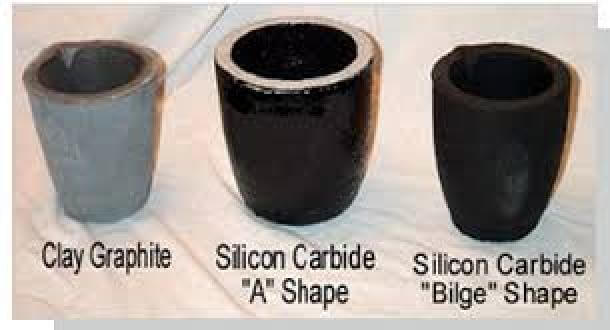
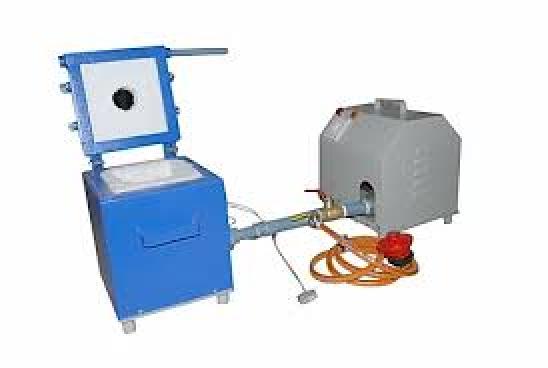
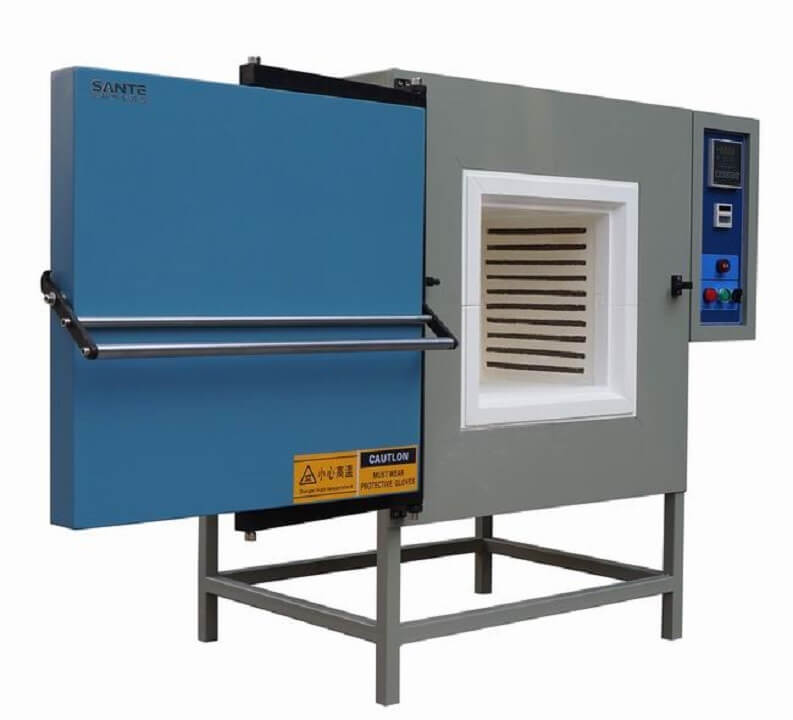
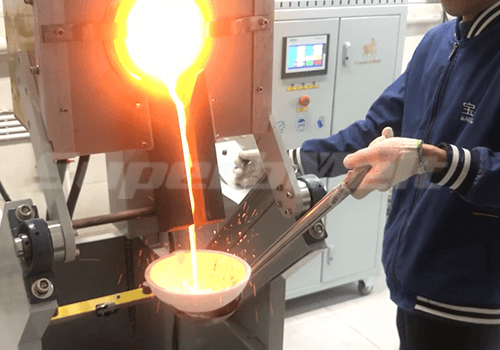
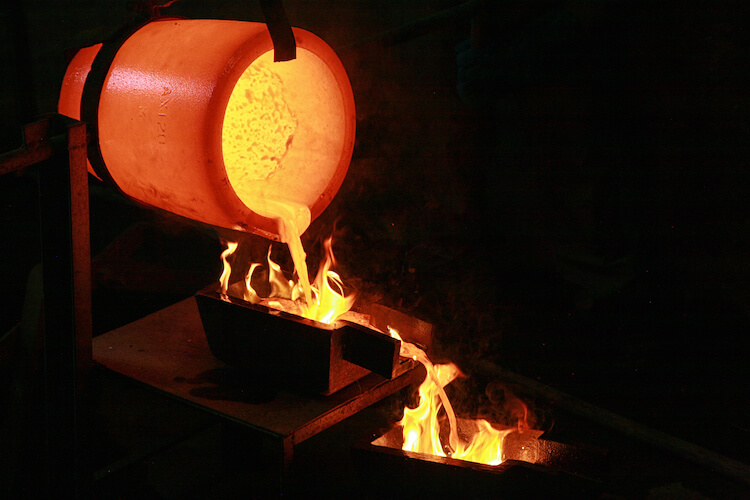
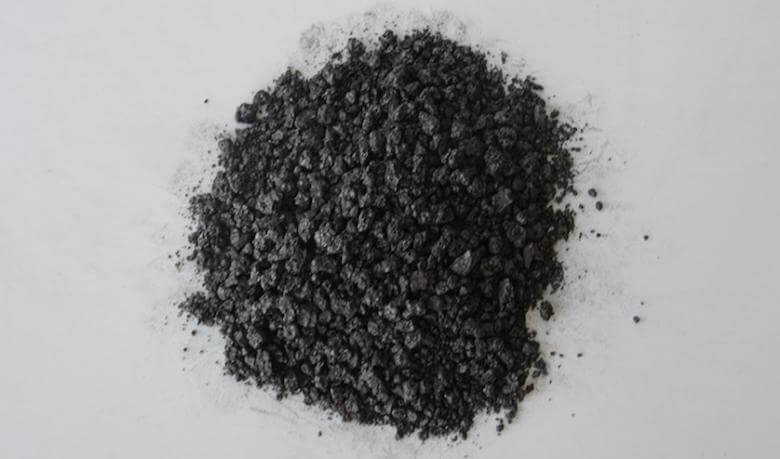
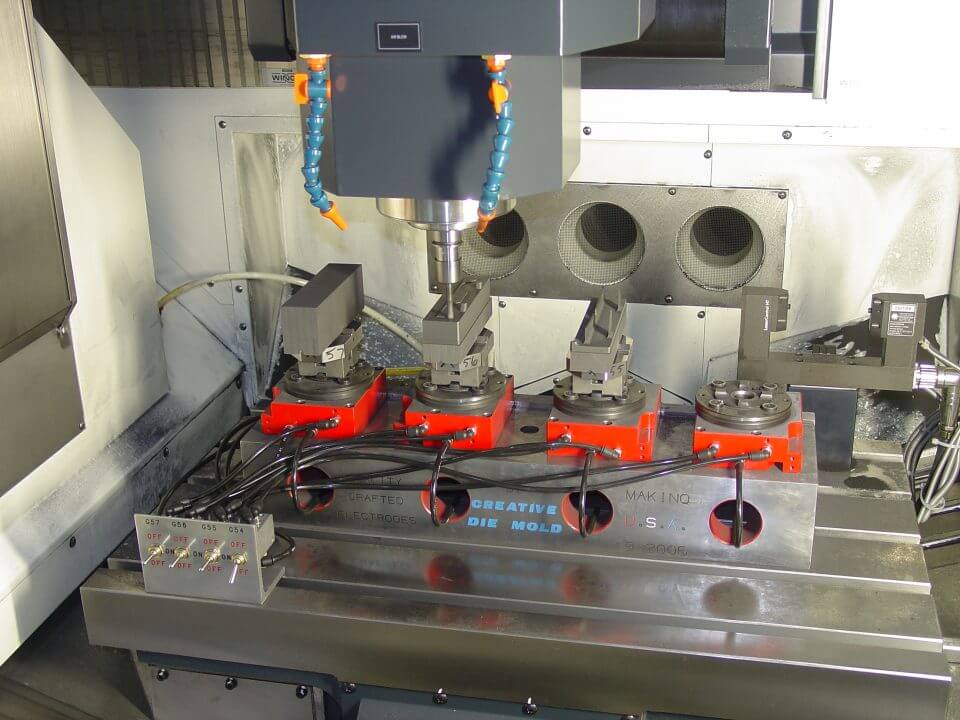
 © Copyright 2008-2021 Superb Electromachinery Co., Limited
© Copyright 2008-2021 Superb Electromachinery Co., Limited